| |
Essential Oils
|
| |
| |
|
| Almond Oil |
|
 |
The Almond (Prunus dulcis, syn. Prunus amygdalus Batsch., Amygdalus communis L., Amygdalus dulcis Mill.), is a species of tree native to the Middle East and South Asia. Almond is also the name of the edible and widely cultivated seed of this tree.
Within the genus Prunus, it is classified with the peach in the subgenus Amygdalus, distinguished from the other subgenera by the corrugated shell (endocarp) surrounding the seed.The fruit of the almond is not a true nut, but a drupe, consisting of an outer hull and a hard shell with the seed ("nut") inside.
Shelling almonds refers to removing the shell to reveal the seed. Almonds are commonly sold shelled, i.e. after the shells are removed, or unshelled, i.e. with the shells still attached. Blanched almonds are shelled almonds that have been treated with hot water to soften the seedcoat, which is then removed to reveal the white embryo. |
| |
 |
| |
|
|
|
| |
| |
|
| Anethi Oil |
|
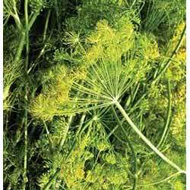 |
The yield of the oil, obtained by distillation with water, is from 2.5 per cent (East Indian) to 4 per cent (Russian) (Schimmel & Co.). The residual herb is rich in nitrogenous and fatty matter, and in dried form is used as feed for cattle. The oil is pale yellow, having a sweetish, sharp, burning taste, and a penetrating odor resembling that of the fruit.
It gradually becomes darker in color. The odor of East Indian dill oil differs markedly from that of the German product. The density is 0.905 to 0.915 (as high as 0.970 for East Indian) (Schimmel & Co.). Optical rotation, +70° to +80°; East Indian, +41° 30'. |
| |
 |
| |
|
|
|
| |
| |
|
| Aniseed Oil |
|
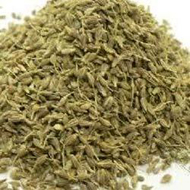 |
Anise is used as food by the larvae of some Lepidoptera species (butterflies and moths), including the lime-speck pug and wormwood pug. |
| |
 |
| |
|
|
|
| |
| |
|
| Arachis Oil |
|
 |
Peanut oil (arachis oil) is an organic material oil derived from peanuts, noted to have the aroma and taste of its parent legume. It is often used in Chinese, South Asian and Southeast Asian cuisine as much as olive oil is used in the Mediterranean.
Peanut oil is appreciated for its high smoke point relative to many other cooking oils. Its major component fatty acids are oleic acid (56.6%) and linoleic acid (26.7%).[citation needed] The oil also contains some palmitic acid, arachidic acid, arachidonic acid, behenic acid, lignoceric acid and other fatty acids. |
| |
 |
| |
|
|
|
| |
| |
|
| Caraway Oil |
|
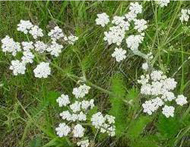 |
Caraway oil has a sweet spicy odor with a slight peppery smell.It is a bi-annual herb that originated from Asia Minor, but is now cultivated in Northern Europe, Africa and Russia. It grows up to 60cm (2 feet) and has soft fern-like leaves, umbels of white/pink flowers and small brown fruit.
Also known as Meadow Cumin, it is a very old, well known spice, used as far back as the Stone Age, while the Egyptians used it as food flavoring, the Romans in bread-making and in the Middle Ages the Germans and Austrians used it in their cooking. Traditionally this herb is associated with sharp eyesight and a sweet breath. |
| |
 |
| |
|
|
|
| |
| |
|
| Cardamom Oil |
|
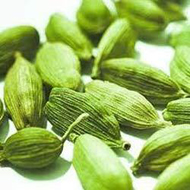 |
Oil properties Cardamom oil is sweet, spicy and almost balsamic in fragrance, is clear to pale yellow in color and slightly watery in viscosity.
Origin of cardamom oil A perennial, reed-like herb, Cardamom grows wild and is cultivated in India and Ceylon. It grows up to 4 meters (13 feet) high and has long, green silky blades, small yellowy flowers with a violet tip and a large fleshy rhizome, similar to ginger. Oblong gray fruits follow the flowers, each containing many seeds.
Cardamom was well known in ancient times and the Egyptians used it in perfumes and incense and chewed it to whiten their teeth, while the Romans used it for their stomachs when they over-indulged. The Arabs ground it to use their coffee and It is an important ingredient in Asian cooking. Valerius Cordus first distilled the essential oil in 1544 after the Portuguese discovered the East. |
| |
 |
| |
|
|
|
| |
| |
|
| Castor Oil |
|
 |
Castor oil is a vegetable oil obtained from the castor bean (technically castor seed as the castor plant, Ricinus communis,([Euphorbiaceae]) is not a member of the bean family). Castor oil (CAS number 8001-79-4) is a colorless to very pale yellow liquid with mild or no odor or taste.
Its boiling point is 313 °C (595 °F) and its density is 961 kg/m3.[1] It is a triglyceride in which approximately 90 percent of fatty acid chains are ricinoleic acid. Oleic and linoleic acids are the other significant components. |
| |
 |
| |
|
|
|
| |
| |
|
| Cinnamon Oil |
|
 |
Cinnamon essential oil is extracted from a tropical evergreen of the Lauraceae botanical plant family which is native to Sri Lanka, South India, the Comoro Islands, Indochina and Madagascar. The tree produces two very different oils by steam distillation; cinnamon bark oil is obtained from the dried inner bark of the tree whereas cinnamon leaf oil is obtained from the leaves and twigs. |
| |
 |
| |
|
|
|
| |
| |
|
| Citronella Oil |
|
 |
Citronella oil is one of the essential oils obtained from the leaves and stems of different species of Cymbopogon. The oil is used extensively as a source of perfumery chemicals such as citronellal, citronellol and geraniol. These chemicals find extensive use in soap, perfumery, cosmetic and flavouring industries throughout the world. |
| |
 |
| |
|
|
|
| |
| |
|
| Creosote Oil |
|
 |
Creosote or pitch oil is the name used for a variety of products that include wood creosote and coal tar creosote. The word is also used to describe the black oily accretion that builds up inside of chimney flues as a result of incomplete burning of wood or coal. Commercially, wood creosote is created by high temperature treatment of beech and other woods, or from the resin of the creosote bush.
Coal tar creosote is used as a wood preservative. It is distilled from crude coke oven tar, and is mainly composed of polycyclic aromatic hydrocarbons (PAHs), but also contains phenols and cresols. |
| |
 |
| |
|
|
|
| |
| |
|
| Dill Oil |
|
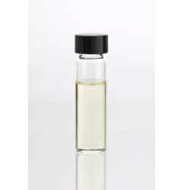 |
Dill oil is the oil extracted from the seeds or leaves/stems (dillweed) of the Dill plant. It can be used with water to create Dill Water. Dill oil is known for its grass-like smell and its pale yellow color, with a watery viscosity. |
| |
 |
| |
|
|
|
| |
| |
|
| Eucalyptus Oil |
|
 |
Eucalyptus oil is the generic name for distilled oil from the leaf of Eucalyptus, a genus of the plant family Myrtaceae native to Australia and cultivated worldwide. Eucalyptus oil has a history of wide application, as a pharmaceutical, antiseptic, repellent, flavouring, fragrance and industrial uses. The leaves of selected Eucalyptus species are steam distilled to extract eucalyptus oil.
Medicinal and antiseptic Use The cineole-based oil is used as component in pharmaceutical preparations to relieve the symptoms of influenza and colds, in products like cough sweets, lozenges, ointments and inhalants. Eucalyptus oil has antibacterial effects on pathogenic bacteria in the respiratory tract.Inhaled eucalyptus oil vapor is a decongestant and treatment for bronchitis. Cineole controls airway mucus hypersecretion and asthma via anti-inflammatory cytokine inhibition. Eucalyptus oil also stimulates immune system response by affects on the phagocytic ability of human monocyte derived macrophages.
Eucalyptus oil also has anti-inflammatory and analgesic qualities as a topically applied liniment ingredient. Eucalyptus oil is also used in personal hygiene products for antimicrobial properties in dental careand soaps. It can also be applied to wounds to prevent infection.
|
| |
 |
| |
|
|
|
| |
| |
|
| Lemongrass Oil |
|
 |
Oil properties Lemongrass oil has a lemony, sweet smell and is dark yellow to amber and reddish in color, with a watery viscosity. Origin of lemongrass oil It is a perennial fast-growing aromatic grass, growing to about 1 meter (3 feet) high with long, thin leaves and originally was growing wild in India. It produces a network of roots and rootlets that rapidly exhaust the soil.
In India it is known as 'choomana poolu' and is also referred to as 'Indian Verbena' or 'Indian Melissa oil' and used in Ayurvedic medicine to help bring down fevers and treat infectious illnesses. It is a valuable ingredient in perfumes and citrus-type soaps and is also an insect deterrent. |
| |
 |
| |
|
|
|
| |
| |
|
| Linseed Oil |
|
 |
Linseed oil, also known as flax seed oil, is a clear to yellowish oil obtained from the dried ripe seeds of the flax plant (Linum usitatissimum, Linaceae). The oil is obtained by cold pressing, sometimes followed by solvent extraction.
Linseed oil is a "drying oil" as it can polymerize into a solid form. Due to its polymer-forming properties, linseed oil is used on its own or blended with other oils, resins, and solvents as an impregnator and varnish in wood finishing, as a pigment binder in oil paints, as a plasticizer and hardener in putty and in the manufacture of linoleum. The use of linseed oil has declined over the past several decades with the increased use of synthetic alkyd resins, which are functionally similar but resist yellowing.
It is an edible oil but, because of its strong flavor and odor, is only a minor constituent of human nutrition in USA, although it is marketed as a nutritional supplement. In parts of Europe it is traditionally eaten with potatoes and Quark (cheese). It is regarded as a delicacy due to its hearty taste, which spices the bland Quark cheese. |
| |
 |
| |
|
|
|
| |
| |
|
| Mentha Oil |
|
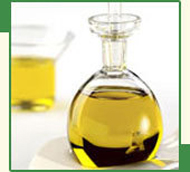 |
Our clients can avail from us an assortment of Mentha Oil IP that is processed using qualitative raw material and is safe to use, having precise composition. Available in bulk quantities, the Mentha Oil IP offered by us is safe to use and is absolutely pure. |
| |
 |
| |
|
|
|
| |
| |
|
| Neem Oil |
|
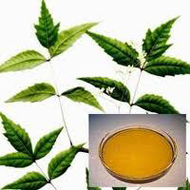 |
Neem oil is generally light to dark brown depending on the time of harvest as well as growing conditions before harvesting. It is bitter and has a strong odor – described by some as a combination of the smell of peanut and garlic.
The oil comprises mainly of triglycerides and large amounts of triterpenoid compounds. It furthermore contains steroids (campesterol, beta-sitosterol, stigmasterol) and triterpenoids of which Azadirachtin is the most well known and studied. |
| |
 |
| |
|
|
|
| |
| |
|
| Nutmeg Oil |
|
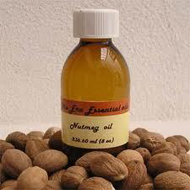 |
Oil properties Nutmeg oil is sharp, spicy and rather musky in aroma. When the oil is made from the husks it produces mace. The oil we sell the is the oil extracted from the seeds, pure nutmeg oil. |
| |
 |
| |
|
|
|
| |
| |
|
| Oil Of Cloves |
|
 |
Oil of cloves, also known as Clove oil, is an essential oil from the clove plant, Syzygium aromaticum.It is a natural analgaesic and antiseptic used primarily in dentistry for its main ingredient eugenol. It can also be purchased in pharmacies over the counter, as a home remedy for dental pain relief, mainly toothache; it is also often found in the aromatherapy section of health food stores.
The oil produced by cloves can be used in many things from flavouring medicine to remedies for bronchitis, the common cold, a cough, fever, sore throat and tending to infections. |
| |
 |
| |
|
|
|
| |
| |
|
| Olive Oil |
|
 |
Olive oil has a strong "food" smell, but also has good medicinal properties, soothing and healing the skin, especially when it is dry. It is a very stable oil and does not go rancid easily and can be stored without refrigeration for a year. The oil is made from the pulp and not the kernel and different qualities are available and range from extra virgin, virgin and pure. Extra virgin is obtained from the first pressing, while virgin oil comes from the second pressing and is normally lighter in color and less aromatic.
It contains good levels of essential fatty acids, alpha linolenic acid and when taken internally is said to assist with heart disease. Applied externally it is useful for dehydrated, sore and inflamed skin and is also used as a remedy for arthritis when rubbed onto the affected parts.
We personally do not prefer to use Olive oil in aromatherapy, since we find the oil a bit too heavy and the aroma too overpowering, but you could add Olive oil to a blend when massaging a mature or dry skin. |
| |
 |
| |
|
|
|
| |
| |
|
| Sesame seed oil |
|
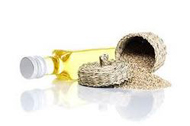 |
This oil is sometimes found to be strong smelling by some, yet is a good source of vitamins E and B complex and minerals such as calcium, magnesium and phosphorus. Sesame oil further contains protein as well as lecithin. |
| |
 |
| |
|
|
|
| |
| |
|
| Silicone Oil |
|
 |
Silicone oils are primarily used as lubricants or hydraulic fluids. They are excellent electrical insulators and, unlike their carbon analogues, are non flammable. Their temperature-stability and good heat-transfer characteristics make them widely used in laboratories for heating baths ("oil baths") placed on top of hotplate stirrers. Silicone oil is also commonly used as the working fluid in diffusion pumps.
Some silicone oils, such as simethicone, are potent anti-foaming agents. They are used in industrial applications such as distillation or fermentation where excessive amounts of foam can be problematic. They are sometimes added to cooking oils to prevent excessive frothing during deep frying.
Silicone oils used as lubricants can be inadvertent defoamers (contaminants) in processes where foam is desired, such as in the manufacture of polyurethane foam. Silicone oil is also one of the two main ingredients in Silly Putty, along with boric acid. |
| |
 |
| |
|
|
|
| |
| |
|
| Soyabean Oil |
|
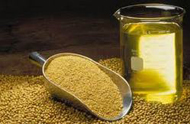 |
Soybean oil is a vegetable oil extracted from the seeds of the soybean (Glycine max). It is one of the most widely consumed cooking oils. Being one of the drying oils,[citation needed] it is also used as a base for printing inks and oil paints. |
| |
 |
| |
|
|
|
| |
| |
|
| Spearmint Oil |
|
 |
Oil properties It has a similar aroma to that of peppermint oil, but is slightly sweeter and is pale yellow to greenish in color. Origin of spearmint oil
it is a native of the Mediterranean area, and is a hardy perennial herb that reaches about 1 meter (3 feet) in height and has bright green lance-shaped, sharply serrated leaves and pink or lilac-colored flowers.
Unlike peppermint, spearmint does not contain high amounts of menthol. The ancient Greeks used it to scent their bath water and it had a reputation for curing sexually transmitted diseases like gonorrhea. During the medieval times it was used to heal sore gums and also to whiten teeth. |
| |
 |
| |
|
|
|
| |
| |
|
| Turpentine Oil |
|
 |
Turpentine (also called spirit of turpentine, oil of turpentine, and wood turpentine) is a fluid obtained by the distillation of resin obtained from trees, mainly pine trees. It is composed of terpenes, mainly the monoterpenes alpha-pinene and beta-pinene. It is sometimes known as turps.
The word turpentine derives (via French and Latin) from the Greek word ??????????? terebinthine, the name of a species of tree, the terebinth tree, from whose sap the spirit was originally distilled.[1]
|
| |
 |
| |
|
|
|
| |
| |
|
| Wheat Germ Oil |
|
 |
Wheat germ oil is extracted from the germ of the wheat kernel, which makes up only 2½% by weight of the kernel[citation needed]. Wheat germ oil is particularly high in octacosanol - a 28 carbon long-chain saturated primary alcohol found in a number of different vegetable waxes.
Octacosanol has been studied as an exercise and physical performance enhancing agent. Very long chain fatty alcohols obtained from plant waxes and beeswax have been reported to lower plasma cholesterol in humans.
Wheat germ oil is also very high in Vitamin E and has the highest content of Vitamin E of any food that has not undergone prior preparation or vitamin fortification. As a cooking oil, wheat germ oil is strongly flavored, expensive and easily perishable. Wheat germ oil contains the following fatty acids
|
| |
 |
| |
|
|
|
| |
|
|